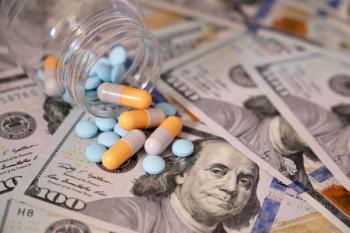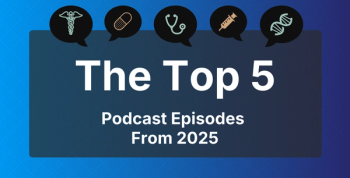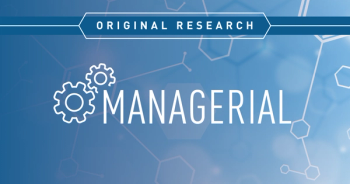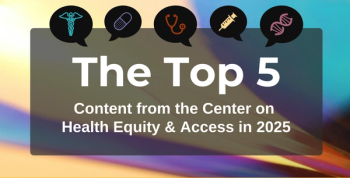
The American Journal of Managed Care
- August 2025
- Volume 31
- Issue 8
- Pages: 398-403
Price Transparency and Patient Engagement: Social Messaging Matters
Key Takeaways
This study examined the impact of price transparency and prosocial messaging on patient engagement of price-protected consumers in seeking value-based care.
ABSTRACT
Objectives: To examine the effects of price transparency and prosocial messaging on price-protected consumers’ health care choices as a potential cost-saving strategy to manage rising US health care expenditures.
Study Design: Cross-sectional study. Participants were recruited to complete a basic questionnaire via Amazon’s Mechanical Turk program. Participants’ selections were subsequently collected and analyzed.
Methods: Participants (N = 567) selected a sleep study provider from 5 options, with manipulations including financial responsibility, provision of price information, and a prosocial message encouraging high-value options.
Results: Price transparency increased the selection of lower-cost options among participants who were solely responsible for paying for their own health care expenses. For participants whose insurance paid for health care expenses, both price transparency and prosocial messaging were necessary to choose lower-cost options.
Conclusions: The study highlights the importance of considering both financial and social factors in patient engagement initiatives, suggesting that a combination of price transparency and prosocial messaging can influence health care choices and potentially contribute to cost-saving strategies in the US health care system.
Am J Manag Care. 2025;31(8):398-403.
Takeaway Points
This study examined the impact of price transparency and prosocial messaging on patient engagement of price-protected consumers in seeking value-based care.
- Price transparency: Consumers in a hypothetical setting with direct financial responsibility choose lower-cost health care options when prices are transparent.
- Prosocial messaging: When consumers in a hypothetical setting are protected from financial responsibility, prosocial messages can effectively encourage the selection of lower-cost, high-quality health care services.
- Policy implications: Delivering prosocial messaging alongside price transparency may reduce wasteful spending in the private and public sectors, potentially lowering national health care costs.
Concerns about escalating US health care costs, including government spending on Medicare ($905 billion, or approximately 4% of US gross domestic product),1 have given rise to numerous innovations relating to consumer choice in health care delivery. A number of recent initiatives in value-based health care and patient engagement have focused on the expected benefits of price transparency. For example, the proposed Drug-price Transparency for Consumers Act of 2025 would require the disclosure of drug prices in any direct-to-consumer pharmaceutical advertising.2 Similarly, the Hospital Price Transparency final rule requiring that hospitals make public a list of standard charges recently took effect,3 and the No Surprises Act of 2022 now requires health care providers to provide good faith estimates for expected charges to uninsured or self-paying individuals.
Transparency relating to health care quality has been shown to influence the behavior of both consumers and health care providers. Consumers have a clear preference for higher-quality providers when performance ratings are publicly available.4,5 In response to likely concerns about public scrutiny and losing market share, health care providers respond to such transparency by improving service quality.5,6 However, the effect of price transparency is less clear. Proponents argue that greater clarity around standard charges for procedures and pharmaceuticals will both allow and motivate consumers to pursue greater value in their care decisions, leading to lower overall health care costs.7-9 Recent research, however, suggests that price transparency has limited effect on consumer behavior. Specifically, although some evidence suggests that price-aware consumers choose less expensive services,10 aggregate consumer spending is not significantly affected by the availability of price transparency.10-12 This is driven, at least in part, by consumers’ reluctance to use price transparency tools when they are available.11-13 Moreover, variations in health insurance coverage and deductible levels result in a wide distribution of financial responsibility for health care services and thus the financial incentives to make cost-sensitive decisions.14 These variations could influence the effectiveness of price transparency initiatives on individual decisions.15 Transparency proponents often fail to account for differential financial incentives across health care consumers, or they fail to provide a viable solution when care is covered in part or completely by insurance. Because health plan beneficiaries regularly find themselves in a position where they do not have to pay the cost of their health care procedures, exploring ways to motivate patients to seek cost-effective outpatient care is both timely and important.14
We conducted a behavioral experiment to examine the effect of price transparency on consumers’ personal health care decisions across different levels of personal financial incentives to pursue lower-cost options. Intuition and economic theory suggest that consumers who are not responsible for the cost of a health care procedure are likely to be less sensitive to the price of that procedure than consumers who do bear the cost of the procedure. Accordingly, these consumers are less likely to be influenced by price transparency. Indeed, given the common heuristic of price as a signal of quality,16-18 consumers who do not have responsibility for costs are even less likely to select lower-cost health care options under greater price transparency than consumers who have financial incentives to seek lower-cost services. Given these expectations, we also examine the effect of a prosocial messaging intervention designed to motivate patient engagement in selecting quality, low-cost health care options, even when financial incentives do not motivate this behavior. Organizations in numerous industries, most notably in hospitality, encourage sustainable consumer behavior using messages designed to increase social consciousness.19 Examples include invitations to reuse towels, decline hotel room housekeeping, recycle, or turn off the lights. Given the social harm associated with rising health care costs, we examined whether consumers’ pursuits of lower-cost value options may be influenced by a simple message designed to induce prosocial considerations.
METHODS
Sample
We recruited participants using Amazon Mechanical Turk (MTurk), an online labor and survey market commonly used to recruit participants for social science experiments. To participate, workers were required to be located in the US, have a unique IP address and geolocation (to avoid the possibility of multiple submissions from a single participant), and have completed at least 500 MTurk tasks with a 99% approval rating or better.20 The study was approved by the Brigham Young University and Clemson University institutional review boards, and all participants provided implied consent before beginning the experiment.
Experimental Design
Participants were asked to assume they had recently been diagnosed with sleep apnea and encouraged by their doctor to have a sleep study performed. Participants were randomly assigned to 1 of 2 financial conditions: They were told that either they or their insurance provider would be solely responsible for the cost of the sleep study. Next, participants were randomly assigned to receive 1 of 3 messages from their insurer detailing 5 laboratory facilities that were approved to provide the sleep study. The information on the 5 labs is shown in
In the “prosocial message” condition, participants saw the same information as in the price transparency condition but were also given a message from the insurer containing the following statement, intended to appeal to participants’ prosocial inclinations: “As you consider your options, we encourage you to fight against the increasingly exorbitant and skyrocketing costs of the US health care system. By selecting a quality provider with competitive pricing, you can help drive down insurance rates for those who may be struggling to pay for needed care.”
In all conditions, participants were asked to choose one of the labs to perform the sleep study. Participants took a mean of 11 minutes to complete the experiment. The primary dependent variable was the cost of the lab chosen to perform the sleep study. We compared the mean cost across treatment conditions using the Wilcoxon rank sum test.
RESULTS
To ensure the validity of our data, we used TurkPrime, a service that blocks responses from suspicious geolocations, duplicate geolocations, and duplicate IP addresses,21-23 to recruit MTurk participants. After these filters were applied, we collected a total of 583 completed responses. Consistent with research on the reliability of MTurk data,24 we removed 16 observations in which the participant failed either of 2 attention-check questions, leaving us with a usable sample of 567 observations.
Demographic information is presented in Table 2 [
We make no prediction regarding the selection of lab options in the no price transparency conditions, as choices in these conditions could be driven by idiosyncratic beliefs about the company names (eg, the signal of including the word “Medicine” vs “Medical” vs “Health”), differences in utility for driving time, etc. That said, 2 of the 5 lab choices are dominated in terms of quality and distance. Only 6 participants in the no price transparency conditions selected a strictly dominated option (in terms of quality and/or distance). However, we found that our results (discussed later) are inferentially identical when we removed these 6 data points. The low number of odd selections and the lack of change in statistical results gave us additional confidence that the experiment worked as intended and that participants were engaged at a high level. We included these 6 participants in our final analyses because (1) doing so provides a more conservative test of our hypotheses, (2) we cannot rule out the possibility that these participants selected dominated choices based on other qualitative factors, and (3) we were unable to conduct an equivalent attention-check screening in conditions where price data were available.
Results in
DISCUSSION
Price transparency was necessary and sufficient for participants to select a lower-priced option when they were responsible for the cost of the procedure, but price transparency alone had no effect on the mean selection price of participants for whom no personal financial incentive was present. Interestingly, in the presence of price transparency, the addition of the prosocial message encouraging efforts to fight rising health care costs (in consideration of those who struggle to pay for needed care) did lead participants without financial incentive to select lower-cost options. In contrast, the mean selection price of participants who were responsible for paying for the procedure was not affected by the prosocial message, as their mean selection price was already low due to price transparency alone. Further, the magnitude of the effect of prosocial messaging on costs when the insurer was responsible for the cost of the sleep study was smaller than the size of the effect of price transparency (without prosocial messaging) when participants were told they would be responsible for the full cost of the sleep study (P < .05). This suggests that, in our experimental setting, although prosocial messaging effectively motivated participants to choose a lower-cost provider absent financial incentives, financial incentives alone provided a stronger motivation for selecting lower-cost options.
Taken together, our results suggest that although health care consumers without direct financial responsibility may not respond to price transparency in the same way as consumers with financial responsibility, consumers without direct financial responsibility may still choose lower-cost options when they are exposed to prosocial messaging. Prosocial messaging, therefore, represents a potential low-cost intervention for motivating value-based patient engagement. Applied to health plans, such a mechanism may prove promising in efforts to reduce wasteful health care spending and thereby curtail rising US health care costs. Specifically, our findings suggest that although consumer touchpoints with health plan administration are somewhat limited at present (beyond standard billing communications), the adoption of prosocial messaging, coupled with the provision of comparable health care options, will increase beneficiary involvement in the selection of quality, low-cost treatment options. Regardless of the modality, prosocial messaging combined with price transparency may contribute to reduced national health care expenditures in health plan–financed procedures. Specifically, managed care organizations (MCOs) may benefit from using prosocial messaging to encourage patients’ price-sensitive engagement, even when patients are not responsible for marginal costs. As MCOs endeavor to provide high-quality care for the lowest price while respecting patient autonomy, a prosocial messaging intervention represents a relatively low-cost method of aligning patient behavior with insurer incentives. Further, as much as this intervention helps drive down wasteful spending, these savings will likely also temper the rate of rising insurance premiums for patients and reduce the financial burden on MCOs.
Finally, our findings have important implications for accounting practice in the health care industry. Historically, hospitals and other health care providers have been reimbursed based on volume rather than actual costs, providing little incentive to adopt more effective accounting systems, which can be costly to implement and maintain.26 However, prosocial messaging and other interventions that increase price scrutiny and competition among providers are likely to increase the need for more efficient cost-based pricing. This will require providers to find more effective ways to track and control indirect costs, which are typically significant.26
Strengths and Limitations
Our experimental methodology provides evidence of causal relations in consumer decision-making that would be difficult with an observational study. Specifically, we demonstrate that price transparency differentially impacts the willingness of consumers in a hypothetical setting to select lower-cost health care alternatives, depending on whether consumers bear the cost of these choices, and that prosocial messaging can help make up the difference when financial incentives are not at play.
There are potential limitations to our experimental approach. First, our results rely on participants’ truthful and introspectively accurate responses to a hypothetical scenario. This reliance could pose a limitation if, for example, prosocial messaging in our study induced a social desirability bias, leading to responses that may not reflect real-world behavior. Second, although prior work suggests MTurk participants are a reasonable proxy for the general population,27,28 it is possible that participants in our study (who were required to have substantial experience with MTurk) may behave differently than the general population. Third, real-world health care treatment choice introduces numerous complicating factors. For example, supply constraints may dramatically alter health care provider selection. Additionally, significant variation exists in the availability and accuracy of price transparency data. Disclosed price data can be inconsistent in format and legibility, often rendering the information useless and unlikely to impact consumer behavior.29,30 Further, the risk or urgency of a specific treatment is likely to influence price sensitivity. A low-risk, low-urgency procedure such as a sleep study may allow patients more time to compare options, as opposed to a risky and urgent treatment for heart failure. Fourth, results may not generalize to procedures in different price ranges or using other types of prosocial messaging.
CONCLUSIONS
To our knowledge, our study is the first to provide evidence that both economic and social considerations can play a role in the development of programs and initiatives designed to reduce health care costs in settings where consumers have cost-relevant or price-protected choices. Combined, our results and the accompanying limitations highlight the need for further research into the effects of prosocial messaging on real-world consumer behavior and health care expenditures.
Author Affiliations: Clemson University (JBG), Clemson, SC; Brigham Young University (KCH, SDS, WBT), Provo, UT.
Source of Funding: The authors are grateful for financial support from Brigham Young University and Clemson University, as well as from Brigham Young University’s Healthcare Industry Research Collaborative.
Author Disclosures: The authors report no relationship or financial interest with any entity that would pose a conflict of interest with the subject matter of this article.
Authorship Information: Concept and design (JBG, SDS, WBT); acquisition of data (JBG, SDS, WBT); analysis and interpretation of data (JBG, SDS, WBT); drafting of the manuscript (JBG, KCH, SDS, WBT); critical revision of the manuscript for important intellectual content (JBG, KCH, SDS, WBT); statistical analysis (JBG, WBT); and administrative, technical, or logistic support (KCH).
Address Correspondence to: William B. Tayler, PhD, CMA, Brigham Young University, 524 TNRB, Provo, UT 84602. Email: tayler@byu.edu.
REFERENCES
1. 2023 Annual Report of the Boards of Trustees of the Federal Hospital Insurance and Federal Supplementary Medical Insurance Trust Funds. CMS; 2023. Accessed July 8, 2024.
2. Drug-price Transparency for Consumers (DTC) Act of 2025, S 229, 119th Cong (2025). Accessed July 7, 2025.
3. CMS, HHS. Medicare and Medicaid programs: CY 2020 hospital outpatient PPS policy changes and payment rates and ambulatory surgical center payment system policy changes and payment rates. price transparency requirements for hospitals to make standard charges public. Fed Regist. 2019;84(229):65524-65606.
4. Chernew M, Gowrisankaran G, Scanlon D. Learnings and the value of information: evidence from health plan report cards. J Econom. 2008;144(1):156-174. doi:10.1016/j.jeconom.2008.01.001
5. Cutler DM, Huckman RS, Landrum MB. The role of information in medical markets: an analysis of publicly reported outcomes in cardiac surgery. Am Econ Rev.2004;94(2):342-346. doi:10.1257/0002828041301993
6. Evans JH III, Hwang Y, Nagarajan N, Shastri K. Involuntary benchmarking and quality improvement: the effect of mandated public disclosure on hospitals. J Account Audit Financ. 1997;12(3):315-346. doi:10.1177/0148558X9701200309
7. Galizzi MM, Ghislandi S, Miraldo M. Effects of reference pricing in pharmaceutical markets. Pharmacoeconomics. 2011;29(1):17-33. doi:10.2165/11537860-000000000-00000
8. Robinson JC, Brown TT, Whaley C, Finlayson E. Association of reference payment for colonoscopy with consumer choices, insurer spending, and procedural complications. JAMA Intern Med. 2015;175(11):1783-1789. doi:10.1001/jamainternmed.2015.4588
9. Wu SJ, Sylwestrzak G, Shah C, DeVries A. Price transparency for MRIs increased use of less costly providers and triggered provider competition. Health Aff (Millwood). 2014;33(8):1391-1398. doi:10.1377/hlthaff.2014.0168
10. Zhang A, Prang KH, Devlin N, Scott A, Kelaher M. The impact of price transparency on consumers and providers: a scoping review. Health Policy. 2020;124(8):819-825. doi:10.1016/j.healthpol.2020.06.001
11. Desai S, Hatfield LA, Hicks AL, Chernew ME, Mehrotra A. Association between availability of a price transparency tool and outpatient spending. JAMA. 2016;315(17):1874-1881. doi:10.1001/jama.2016.4288
12. Desai S, Hatfield LA, Hicks AL, et al. Offering a price transparency tool did not reduce overall spending among California public employees and retirees. Health Aff (Millwood). 2017;36(8):1401-1407. doi:10.1377/hlthaff.2016.1636
13. Christensen HB, Floyd E, Maffett M. The only prescription is transparency: the effect of charge-price-transparency regulation on healthcare prices. Manage Sci. 2019;66(7):2861-2882. doi:10.1287/mnsc.2019.3330
14. Emanuel EJ, Diana A. Considering the future of price transparency initiatives—information alone is not sufficient. JAMA Netw Open. 2020;4(12):e2137566. doi:10.1001/jamanetworkopen.2021.37566
15. Sommers R, Goold SD, McGlynn EA, Pearson SD, Danis M. Focus groups highlight that many patients object to clinicians’ focusing on costs. Health Aff (Millwood). 2013;32(2):338-346. doi:10.1377/hlthaff.2012.0686
16. Gerstner E. Do higher prices signal higher quality? J Mark Res. 1985;22(2):209-215. doi:10.2307/3151366
17. Rao AR, Monroe KB. The effect of price, brand name, and store name on buyers’ perceptions of product quality: an integrative review. J Mark Res. 1989;26(3):351-357. doi:10.2307/3172907
18. Riesz PC. Price-quality correlations for packaged food products. J Consum Aff. 1979;13(2):236-247.
19. Houdré H. Sustainable development in the hotel industry. Cornell Hospitality Industry Perspectives white paper. August 2008. Accessed July 8, 2024.
20. Peer E, Vosgerau J, Acquisti A. Reputation as a sufficient condition for data quality on Amazon Mechanical Turk. Behav Res Methods. 2014;46(4):1023-1031. doi:10.3758/s13428-013-0434-y
21. Ahler DJ, Roush CE, Sood G. The micro-task market for lemons: data quality on Amazon’s Mechanical Turk. Political Sci Res Methods. 2025;13(1):1-20. doi:10.1017/psrm.2021.57
22. Dennis SA, Goodson BM, Pearson CA. Online worker fraud and evolving threats to the integrity of MTurk data: a discussion of virtual private servers and the limitations of IP-based screening procedures. Behav Res Account. 2020;32(1):119-134. doi:10.2308/bria-18-044
23. Kennedy R, Clifford S, Burleigh T, Waggoner PD, Jewell R, Winter NJG. The shape of and solutions to the MTurk quality crisis. Political Sci Res Methods. 2020;8(4):614-629. doi:10.1017/psrm.2020.6
24. Thomas KA, Clifford S. Validity and Mechanical Turk: an assessment of exclusion methods and interactive experiments. Comput Human Behav. 2017;77:184-197. doi:10.1016/j.chb.2017.08.038
25. Grant AM, Sumanth JJ. Mission possible? the performance of prosocially motivated employees depends on manager trustworthiness. J Appl Psychol. 2009;94(4):927-944. doi:10.1037/a0014391
26. Hilsenrath P, Eakin C, Fischer K. Price-transparency and cost accounting: challenges for health care organizations in the consumer-driven era. Inquiry. 2015;52:0046958015574981. doi:10.1177/0046958015574981
27. Mullinix KJ, Leeper TJ, Druckman JN, Freese J. The generalizability of survey experiments. J Exp Pol Sci. 2015;2(2):109-138. doi:10.1017/XPS.2015.19
28. Coppock A. Generalizing from survey experiments conducted on Mechanical Turk: a replication approach. Political Sci Res Methods. 2019;7(3):613-628. doi:10.1017/psrm.2018.10
29. Maleki N, Padmanabhan B, Dutta K. Usability of health care price transparency data in the United States: mixed methods study. J Med Internet Res. 2024;26:e50629. doi:10.2196/50629
30. Zhang X, Haviland A, Mehrotra A, Huckfeldt P, Wagner Z, Sood N. Does enrollment in high-deductible health plans encourage price shopping? Health Serv Res. 2018;53(suppl 1):2718-2734. doi:10.1111/1475-6773.12784
Articles in this issue
Newsletter
Stay ahead of policy, cost, and value—subscribe to AJMC for expert insights at the intersection of clinical care and health economics.








































